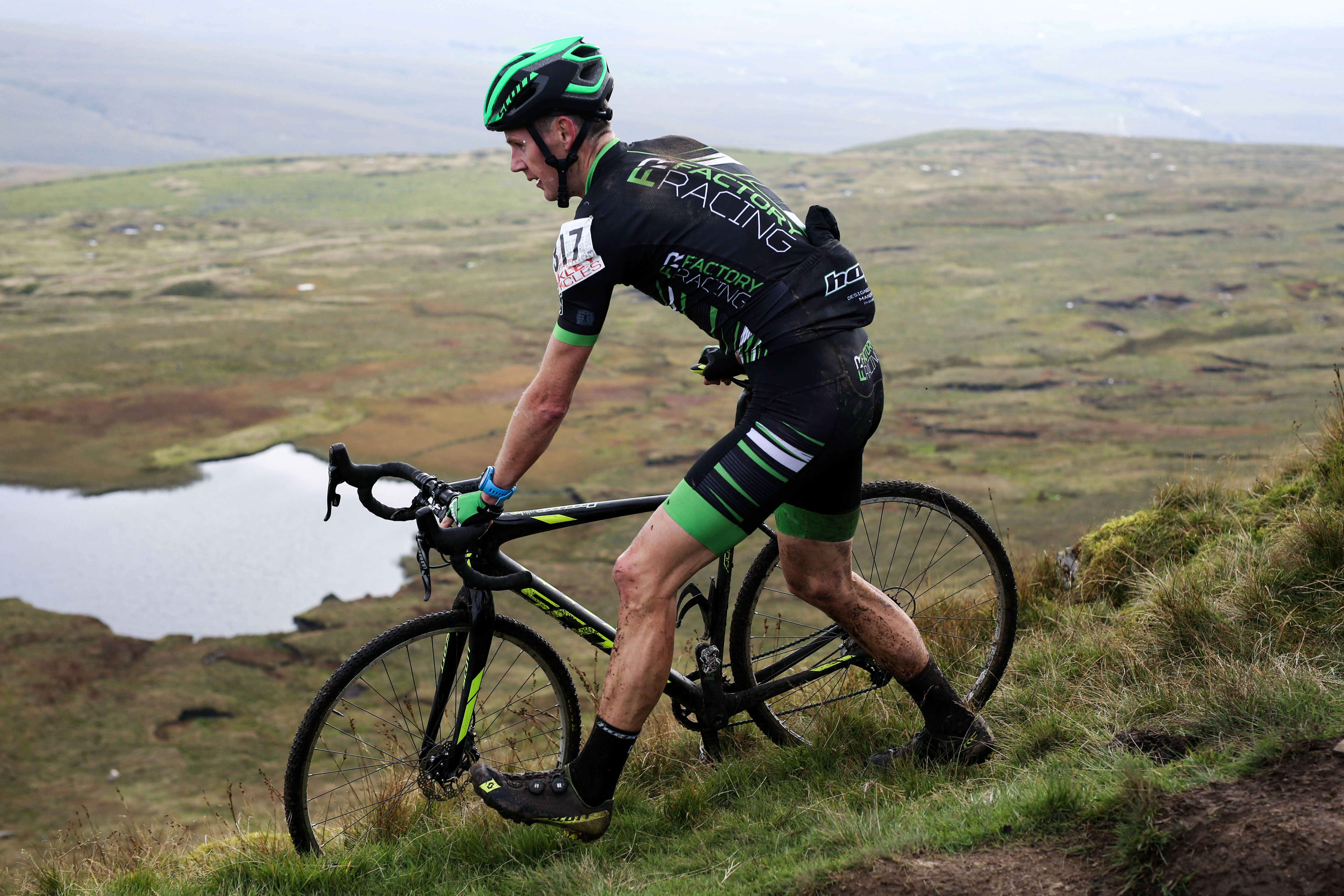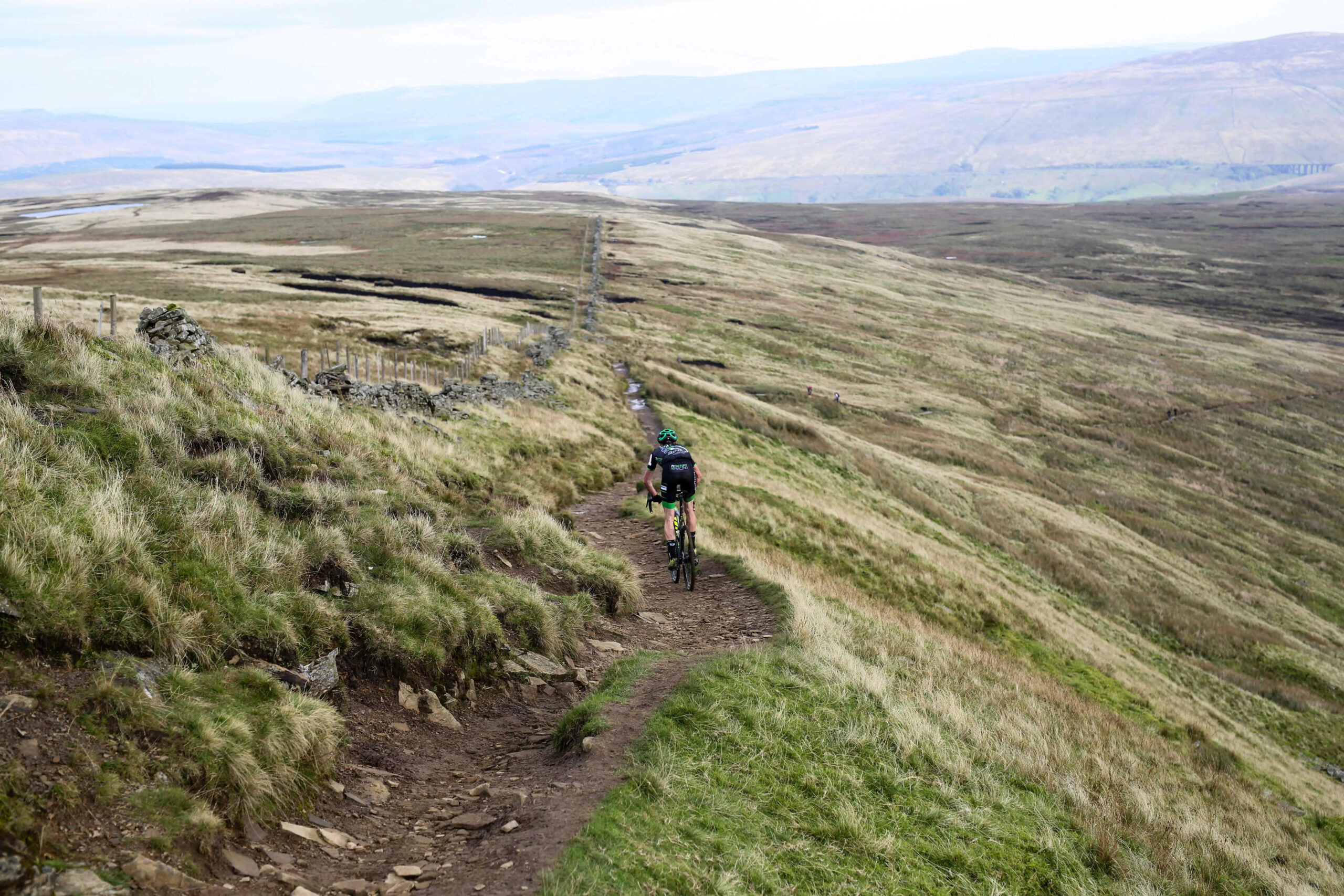Did someone say something about a World Championships?
My first Three Peaks didn’t get off to a good start. In fact, it didn’t start at all.
I’m not new to cyclocross, or the Three Peaks Cyclo-cross race for that matter; I have been photographing this 55-year-old and very British race since 2013. However, I only recently decided I had the balls and fitness to take part, as I race cyclocross throughout the winter at the North West Cyclocross Association league races.

There are a handful of juniors and the same number of older riders dominating the scene; some of those riders include Giles Drake, Nick Craig, and Dave Haygarth. A few riders can also be seen racing from over the border in Yorkshire here in the northwest with the likes of Paul Oldham and Jack Clarkson. All of these on a good day could contest for the win at the Three Peaks.

I am not one of those riders. I get around the course—don’t get me wrong—I race and I put as much effort in as some of those dominating riders, and I’d like to say I have the same kind of skill level and confidence, but I just don’t have the time to produce the fitness some of those guys have.
Twelve months ago I was photographing the Three Peaks, the race was over and I was heading back to my car when I spotted a Gas Gas trials bike with front forks mounted on the handlebars for spare wheels. It was a support bike. I couldn’t walk past that bike without finding out about its story and getting some shots.
The owner of said bike planted the seed in my mind that I could race the Three Peaks, and I could get a spot if I marshalled at the National Championships Cyclocross race in Bradford.

So I marshalled, and in the process got wrangled into shooting the race for the organiser, Fred Rothwell. Later on in the year Fred would help me interview Tom Pidcock at an exhibition I hosted at Rapha in Manchester.
I entered and got my spot.
My training ensued with a season of cyclocross racing, 120-mile commutes and regular 5 and 10km runs through the salubrious streets of Wythenshawe.
The race was two weeks away, my bike was ready with the necessary modifications. It was perfect: 40-tooth Wolftooth chainring on the front, and Shimano 105 GS derailleur with an 11-speed, 11-40-tooth cassette on the back.

My body was ready, or it was until I contracted tonsillitis. After a week of not being able to eat or drink, I decided it would be silly to race. Another week of antibiotics and I was back to normal. I felt OK, but racing was off the cards. This time I threw my camera over my shoulder and left the bike at home.
I was originally going to write about my experience as a first-timer on the Three Peaks. When this happened, I had to adapt and change my plan of attack.
I said I have photographed the race before, but had never been up to the summit of any of the peaks and was missing one of the peaks altogether—Whernside.

This was my plan of attack: feeling better and almost normal, I decided to go for a run, a run up to the summit of Whernside. Running was a big part of my training, so this would help me feel less of a failure and get a little of my lost fitness back from not eating for five days and not riding for two weeks.
The riders set off at 9am on their way to Simon Fell. I caught them just before the turn off up to the climb. I got a few shots and headed to Ribblehead Viaduct.
By the time I got there I should have had about an hour before the fastest rider summited Whernside. Paul Oldham was the favourite and Rob Jebb was not far off the mark either, although a few other riders were also in line for the top position, including first-time rider and fellow NWCCA racer Giles Drake.

I set off running shortly after the viaduct, passing walkers, runners and marshals, some saying hello and some stopping me to chat. I was conscious that I needed to hurry or I would miss the lead rider over the top.
I came up behind an old chap with his wife carrying a set of Hope Tech wheel bags. We chatted about the race and its future, and why I was running and what I do for a living. He started out photographing the Three Peaks, just as I did, and then switched to racing it and did so for many years.
I asked who he was supporting. He said, “Are you familiar with Rob Jebb?” so of course I replied yes. I asked if he was related by any chance and he said, “Yes, unfortunately, I’m his dad” and started laughing.

I left him to climb the fell and carried on to run up to the summit. As I was running I started to think about my own children and wondered if they will get the chance to race this crazy British race.
My thoughts then turned to Nick Craig and his family. Charlie, Nick’s son, passed away shortly after the Three Peaks last year. Charlie was a promising young rider himself who won the Under-16 National Trophy Cyclocross Series and was supporting his dad at the Three Peaks. I had gotten a shot of Charlie and his mates riding up Pen-y-Ghent chasing Nick, having a laugh and just being kids—it was nice to see.
I needed to hurry as the riders were on their way to the top of Whernside, so I picked up the pace.

I spotted the first rider on the ridgeline: it was Paul Oldham. There was a huge gully carved into the peak of the mountain, and he was coming down it at a pretty fast rate.
I thought he would have to dismount, surely, as the there was a massive drop-off which I didn’t think could be ridden on a ’cross bike, but he stayed on and sped off into the distance, down to the viaduct at the bottom.

I expected other riders to be with him, but it was about five minutes before the next rider came through. It was Giles Drake followed by three more riders. About ten minutes back, Rob Jebb came through looking a bit worse for wear.
It wasn’t until I got back to the finish that I found out that Rob had a collided with a walker and was knocked unconscious. By the time I saw him he’d managed to get himself together and back on his bike. He rode to the bottom and then was taken to hospital in an ambulance to make sure everything was OK.

I headed to the summit, where the marshals and the ‘checkpoint dabbers,’ as they are known, were. It was super windy and quite cold up there. I didn’t stick around; I got a few shots and was ready to get back to the finish.

I thought about heading to Pen-y-Ghent where I could still get plenty of riders going up and down the two-way bridleway to the top, but by this point I was pretty tired and my feet were developing blisters.
I ran to the bottom, which should have been easier than going to the top. Physically it was, but the paths were littered with bikes and riders repairing punctures. In places the paths, which had been laid fifty years ago or more, had sunken into the boggy ground and were uneven and all over the place. They make Paris-Roubaix look like a beautifully smooth piece of highway. They looked more like obstacles rather than pathways.

I spotted a few familiar faces as I was descending. I saw Emma Osenton at the bottom about to cross a river, and then a voice said, “If someone has gone to the effort of building a bridge the least we can do is to use it.” So Emma and a couple of other riders made the sensible decision and used the bridge while everyone else got ice-cold wet feet.

Chipps (Singletrack Magazine editor) came up behind me, clearly having fun, or at least it looked like he was, donning a jaunty new beard and ‘stache with a big smile on his face.

At this point I was done; I needed some water and was ready to get back to civilisation.
I had done my Three Peaks, or at least one of my Three Peaks. I’m coming back next year with my bike to conquer the other two.
I said “Hi” to Nick and kept it brief. Keep riding mate, my thoughts are with you, Sarah and Tom.




















Nice story – and a nice shot of me too. Should I have been taking it more seriously do you reckon?
Nice story – and a nice shot of me too. Should I have been taking it more seriously do you reckon?
Nice story – and a nice shot of me too. Should I have been taking it more seriously do you reckon?
Nice story – and a nice shot of me too. Should I have been taking it more seriously do you reckon?
Never take things too seriously, unless you’re planning on winning it. Then I’ll let you off Hope you had a good day.
Never take things too seriously, unless you’re planning on winning it. Then I’ll let you off Hope you had a good day.
Never take things too seriously, unless you’re planning on winning it. Then I’ll let you off Hope you had a good day.
Never take things too seriously, unless you’re planning on winning it. Then I’ll let you off Hope you had a good day.
Bridge…the river is quicker. Not like you’ll have dry feet by that stage anyway.
Bridge…the river is quicker. Not like you’ll have dry feet by that stage anyway.
Bridge…the river is quicker. Not like you’ll have dry feet by that stage anyway.
Bridge…the river is quicker. Not like you’ll have dry feet by that stage anyway.